Did you know Hong Kong’s street food stalls made the Michelin list not too far back? If Chinese street food listed is in the prestigious guide, you know it’s gotta be good. But with so many options to choose from, where do you start? Not to worry, we’re here to help. With this drool-worthy list of 9 Chinese street food treats you need to try asap, you have everything you need to go on an eating adventure like no other. The best part? The items listed here all cost 1 dollar or less so there’s nothing stopping you from tasting and sampling these street food Chinese delicacies. So, ready to leave Chinese restaurants behind and to go outside to eat wonderful Chinese street food?
🏮 Ninchanese is an incredible app for learning Chinese! 🏮
” I actually graduated from the University of Edinburgh with a MA in Chinese.
I’ve used Ninchanese daily, and it has helped me a lot! “
– Connor, Ninchanese User
Try Ninchanese, an award-winning method to learn Chinese today:
Start Learning Now
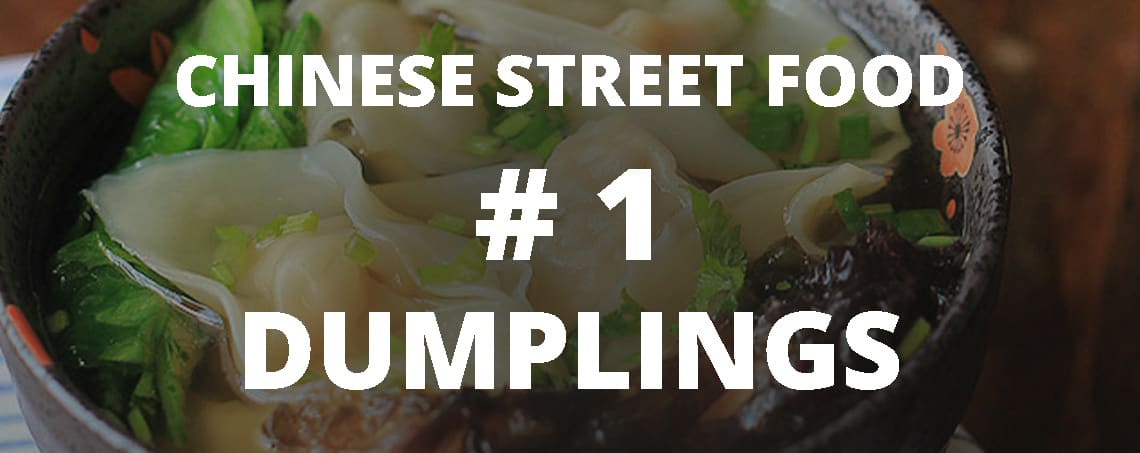
#1 Chinese Street Food: Dumplings
It’s funny how so many cultures have dumplings of sorts in their national cuisine. The Italians have raviolis, the Polish have pierogis, in South America, empanadas can be found everywhere, and in Asia, the dumpling is king.
In China, especially, dumplings are a must. Many many types of dumplings exist; water-boiled, pan-fried, fried,… and the three types of dumplings we’re about to mention here must be added to your eating list.
饺子 – Boiled Dumplings
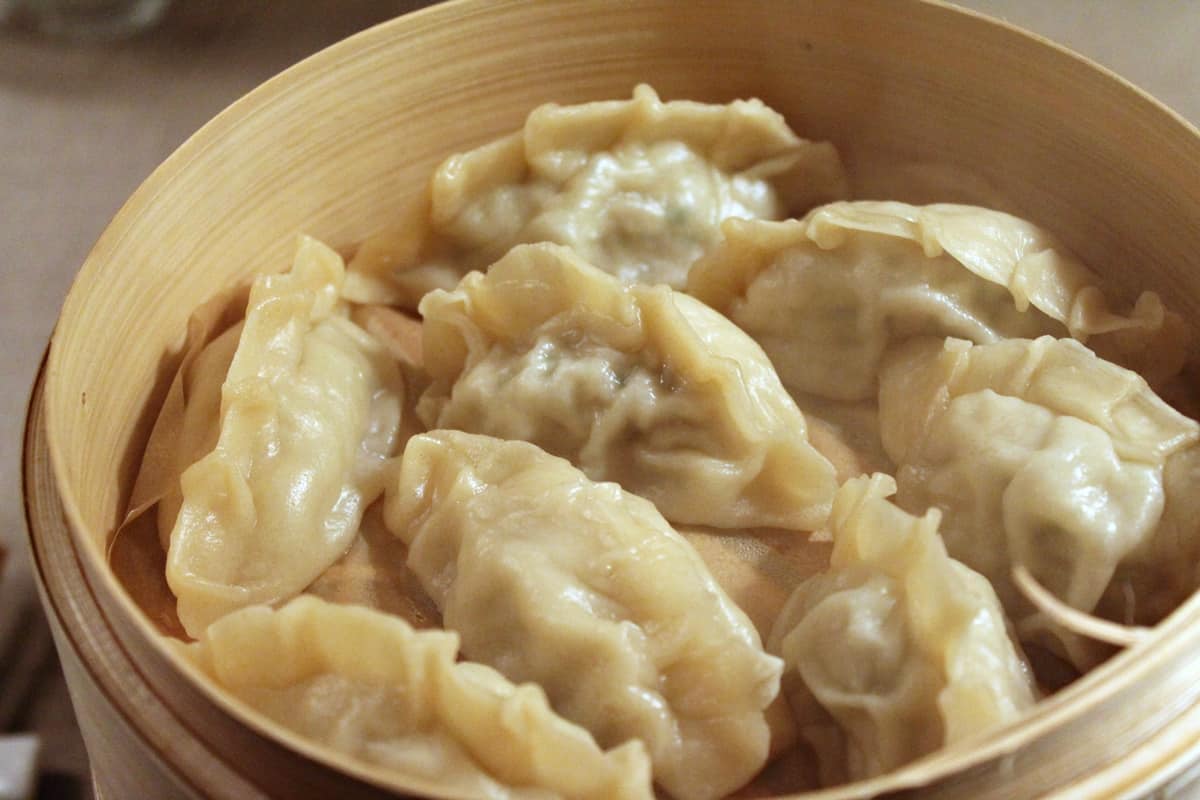
饺子 can be stuffed with many things, and therefore many filling combinations exist. Popular ones are pork and cabbage, shrimp and corn, pork/egg and chives (韭菜), you can also find some filled with carrots, chicken and 黑木耳 Hēi mù'ěr a black comestible fungus.
Price range for 6 pieces: from 2RMB to 8RMB (人民币 rénmínbì RMB, which is the Chinese currency), depending on what they’re filled with. Cities such as Beijing or Shanghai might be more expensive.
Jiaozis are also a very easy Chinese street food delicacy to reproduce at home: once the dough is made (or is store-bought) they’re easy to fill and cook up. It’ll take you less than an hour and your family will be in for a real treat.
馄饨 – Soup with dumplings
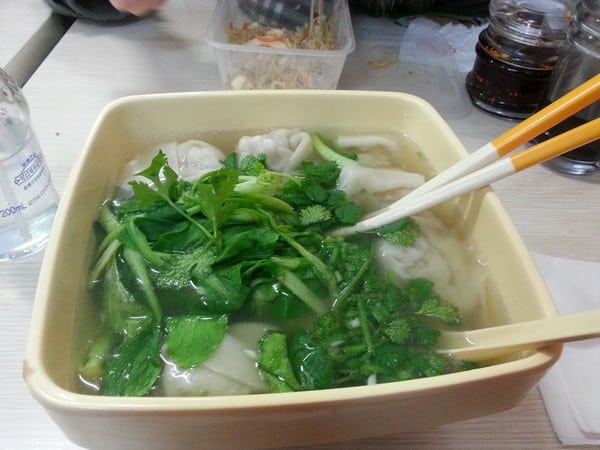
What better way to warm yourself up with a hot, steamy, tasty soup filled to the brim with dumpling goodness? If this sounds like the perfect answer to the unending winter coldness, then wonton soup is for you.
A wonton — which comes from the Chinese word 馄饨 Húntún we’re talking about here, by the way — is what you call a dumpling in water. 馄饨 Húntún Soup with dumplings is basically a bouillon filled with boiled dumplings, stuffed with a variety of ingredients, just as in 饺子.
馄饨 and their English name, wonton, have very similar pronunciations so we know you’ll have no problem remembering and ordering this yummy Chinese street food soup, right?
Look for: slurping sounds and places with big bowls.
生煎包 – Pan-grilled pork bun
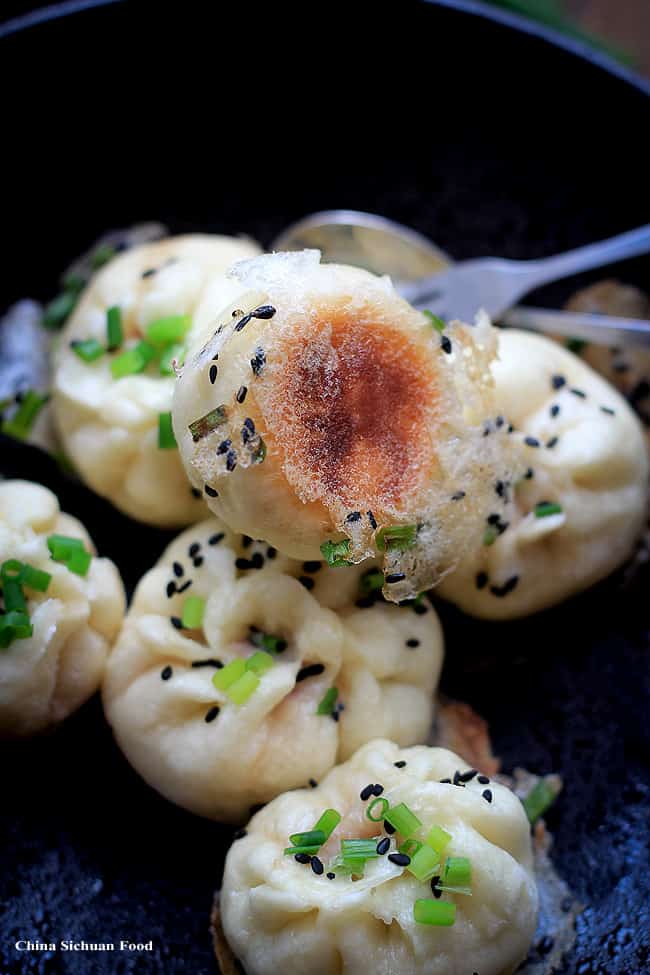
Nincha’s favorite street food is the 生煎包 Shēng jiān bāo Pan-grilled pork bun.
Pan-grilled buns are as small as a dumpling. You eat them piping hot, covered with chopped green onions and with a crispy grilled bottom — they are pan-fried until brown.
The striking combination of the white, the green and the brown is a sight to behold and our Nincha isn’t wrong in thinking these babies taste as good as they look.
Price Range for 4 pieces: from 3RMB to 5RMB in Shanghai. You can buy them almost everywhere in China.
To find them: look for huge, large, flat-ish pans on cooking stoves and crackling sounds.
Not into dumplings? Worry not, China’s chock-full of street food delicacies to discover and chow down. So let’s move on on to part 2 of our street food adventure: Noodles!
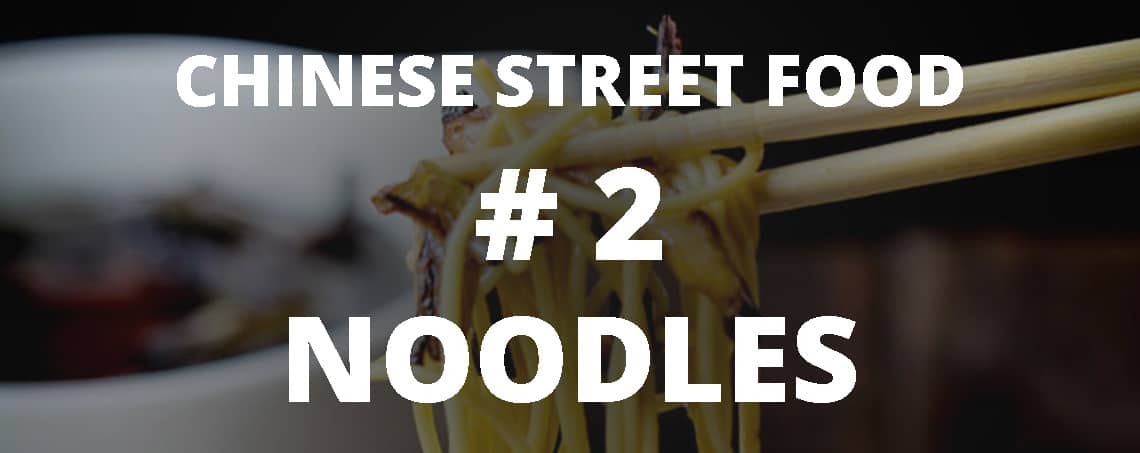
# 2 Chinese Street Food: Noodles
It’s unclear whether Marco Polo brought back noodles from Asia, or imported the concept of noodles into Asia from Italy. In any case, one’s thing is sure: the Chinese have a handle on noodles, especially when they’re soup-based.
兰州拉面 – Lanzhou noodle soup

It is said that the only true place to eat 兰州拉面 noodles is in Lanzhou, smack in the middle of China. So, if you get a chance to visit the Middle Kingdom’s center, don’t miss those noodles!
Thankfully, since we can’t all be in Lanzhou, this hasn’t stopped Lanzhou noodles from being sold throughout China. You therefore should pretty much be able to taste those delicious hand-pulled noodles cooked served in a beef or mutton broth anywhere in China. The noodles must be hand-made and hand-pulled, so don’t be surprised if they’re sometimes thin and sometimes thick. It all depends on the owner’s taste. ^_^.
Depending on what extras you add in, a 兰州拉面 dish should set you back 6 RMB or a little more depending on which city you are. Still, not a bad price for a dish, which has fans saying that if you haven’t had 兰州拉面 before, you haven’t really lived.
豆腐粉丝汤 – Fried-Tofu bean noodle soup
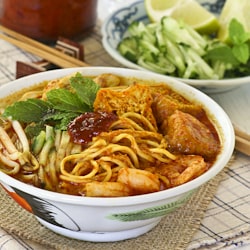
You can find 豆腐粉丝汤 Dòufu fěnsī tāng Fried-Tofu bean noodle soup in pretty much all of Shanghai’s street food stalls.
Fried tofu is stewed in a big pot with meat and served with bean-noodles instantly cooked upon order. The soup base is quite tasty, if a little greasy (from the fried tofu).
Still make it a must-try on your list — have some at least once — and see if you like it! 豆腐粉丝汤 costs around 6RMB per bowl.
Now that you’ve learned which noodles and dumplings to sample first, you now have plenty of yummy food options to chow down on your street food eating adventure. Needless to say, now that we’ve mentioned the best snacks you can have for lunch or dinner, we can’t just leave you starting your adventure on an empty stomach.

#3 Chinese Street Food: Breakfast
So, let’s talk about yummy breakfast items. We promise, we’re leaving congee out of this. This time.
豆浆油条 – Warm soy milk with fried dough sticks

It tastes really sweet and it’s a good way to start the day, plus it’s healthy.In Shanghai, 油条 is one of the Chinese’s favorite street food.
The average price is 1RMB each. When talking to Chinese overseas, the one thing they miss the most is their 油条. So if you’re within the vicinity of a 油条 stall and you’re in the mood for breakfast, you know what your job is: get some!
煎饼 – Chinese-style crepe
煎饼 Jiānbing Chinese-style crepe is also a good breakfast option you can easily have in every city of China.
To make your 煎饼, they start by spreading a flour and egg crepe on a smooth pan. One or two eggs are cracked onto it as one side of the 煎饼 is cooking. Cilantro and chopped green onions are sprinkled on the still-runny eggs. The 煎饼 is then flipped over, and brushed with diluted fermented tofu (it’s a lot better than it sounds). You can add hot pepper sauce if you want.
A rectangular piece of crispy dough is placed in its center and then ta!da! Once the 煎饼 is folded, it’s ready to land in your mouth.慢慢吃! Enjoy!
Price range for a 煎饼: from 3.50RMB to 5RMB in Beijing. Not a bad start to your day, heh?
How are you liking the street food eating adventure so far? Your stomach must be so stuffed now, lucky you!
We’ve talked all sorts of savory foods to try: dumplings, noodles, crepes… but where’s the real sweet stuff to try, you might be wondering? Fear not, here come two sugary items that’ll satisfy your sweet tooth like no other!
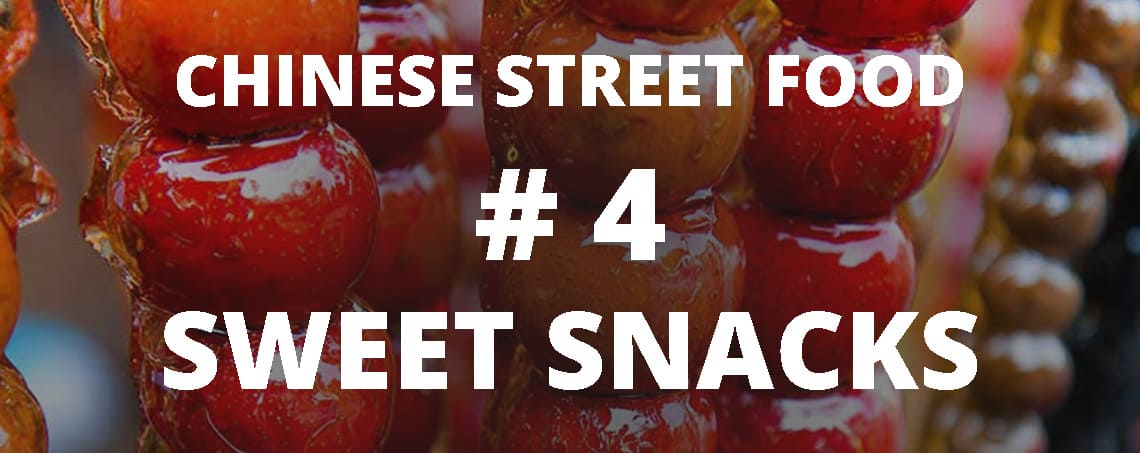
# 4 Chinese Street Food: Sweet snacks!
Whoever said the Chinese didn’t like sweets, probably was denied the thrill of sugar all their childhood and vowed to get their revenge. For fear not, oh sweet one, sweet snacks exist a-plenty in China. Here are two you need to try ASAP.
奶茶 – Milk tea
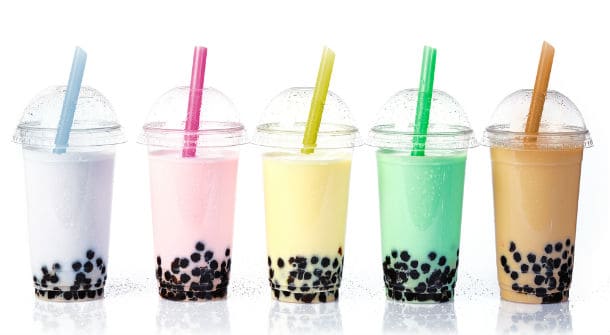
No matter if it’s winter or summer, you’ll always see people holding a bottle or a cup of 奶茶 nǎi chá milk tea walking around.
奶茶 is said to have originated in Taiwan and spread through Asia like wildfire. It’s probably one of the favorite drinks in China of Chinese people and foreigners alike.
Milk tea starts with tea and milk, of course, but it’s now been elevated to an art form:there are a million different milk tea combinations you can make, depending on what flavor you want to add to the milk, whether you want it hot or cold, with or without milk…
There are lots of flavor to choose from and you can even add pudding and jelly in them…or tapioca pearls, something we highly recommend. When pearls are added, 奶茶 officially becomes 珍珠奶茶 zhēn zhū nǎi chánǎi chá I'm milk tea or bubble tea. So to get the full 珍珠奶茶 bubble tea experience, we definitely suggest you add the pearls.
Bubble tea is a name you might have heard more often outside of China than 奶茶. The name was then imported back into Asia, and some now say boba tea in Asia.
糖葫芦 – Caramel Hawthorn
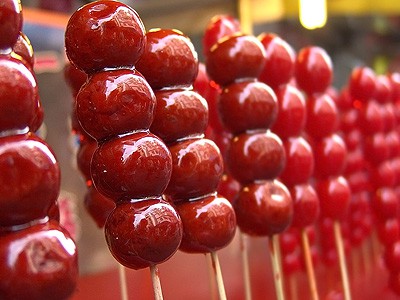
Ever had a candied apple?
This is what 糖葫芦 táng hú lu Caramel Hawthorne reminds us of the most. A traditional Chinese snack, 糖葫芦 is a wonderful gift for children (and adults alike).
Originally made with hawthorn fruit, 糖葫芦 is fruit strung on a bamboo stick and coated in red sugar syrup. It’s nice and cool, crunchy and sweet and some even say it also gets rids of your tiredness. We know the sight of such candy perks us up right up, so there might be some truth to that!
Originally made with hawthorn fruit, 糖葫芦 is now made with all sorts of fruits: strawberries, grapes, bananas, cherry tomatoes (which are, in all fairness, officially considered a fruit).
They cost 2 RMB and up depending on the fruit you choose and on which city you’re located. Cheap enough to try each fruit right?
The yummy 糖葫芦 conclude our suggestions of street food to try. You have options for breakfast, lunch, snack and dinner, so if you want to take our Chinese street food guide out for a spin, you’re in for a whole scrumptious day of eating. Did all this make you hungry? Ready to go on your eating adventure?
When you do, make sure you keep in mind one thing: when eating in the street among other people, it is considered as polite to make slurping sounds as you eat, so make sure to show you’re enjoying your food and to be vocal about it!
And when you’re done eating, come back and tell us: what’s your favorite street food in China? Which one do you miss the most? Have you tried them all yet? You can also suggest us any ideas about missing meals so we can build all together an even more awesome guide 🙂
Images: Tastespotting, echineselearning, thewoksoflife, chinasichuanfood, cateringexpert, cnkick.net, ninhaochina
Pauline and the
The Nincha Team
Stay in touch with us on Facebook, Twitter, Instagram, and Pinterest.

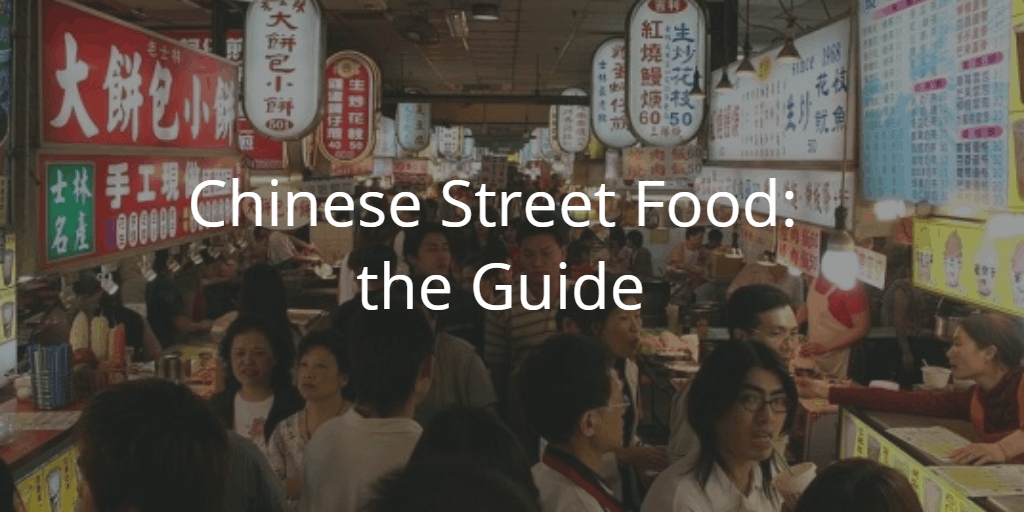




6 comments
Join the conversationPingback: Mandarin Weekly #60 – Mandarin Weekly (每周中文)
Pingback: Unexpected Chinese Customs and Beliefs
Iris - March 25, 2016
AS is well known, Chinese food is more and more famous all over the world. As a Chinese, my favourite food is dumpling which is a tradional food eaten in the Spring Festival. Well in China, northerners prefer to eat noodles but southerners prefer rice to noodles. Meanwhile, warm soy milk with fried dough sticks is the best choice for breakfast. And the most famous sweet snack is caramel hawthorn but I don’t like it because it’s very sour. Finally, welcome to China to experience the authentic Chinese food!
nincha - March 25, 2016
Hi Iris! Totally agree, warm soy milk and fried dough sticks are to die for. As for caramel hawthorns the Nincha team likes them better with apples. Thanks we love authentic food 🙂 Do you live in China?
Pingback: The 10 Ancient Chinese Inventions That You've Never Thought Were Chinese - Ninchanese
Pingback: Chinese food: Learn to Cook and Spice your Chinese meal with complete vocabulary lists! - Ninchanese
Comments are closed.